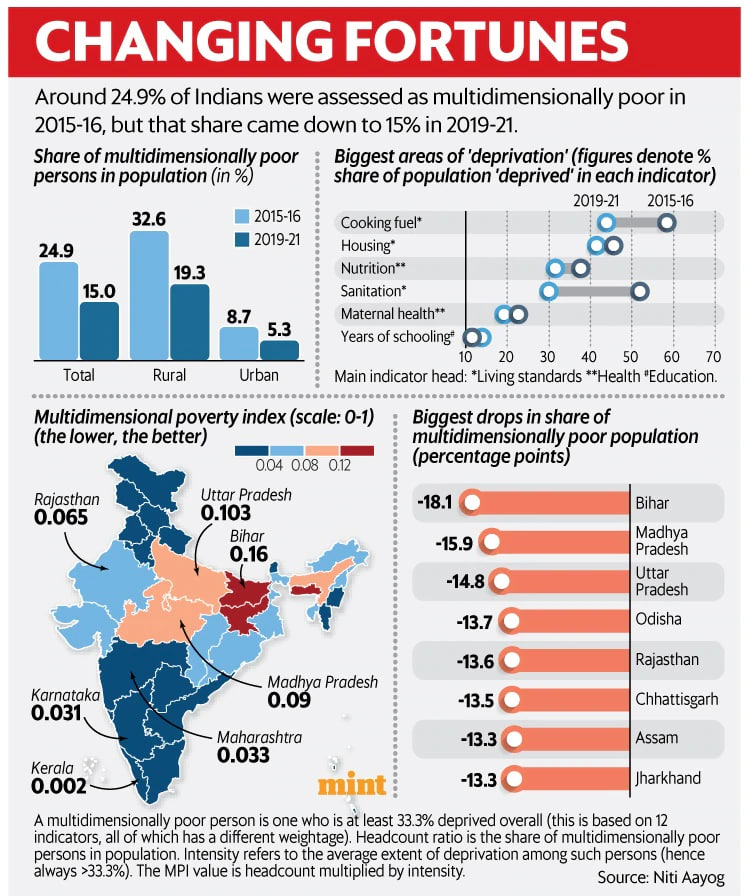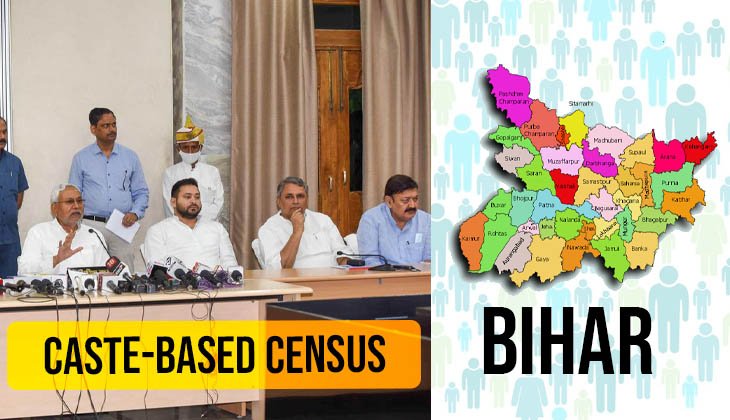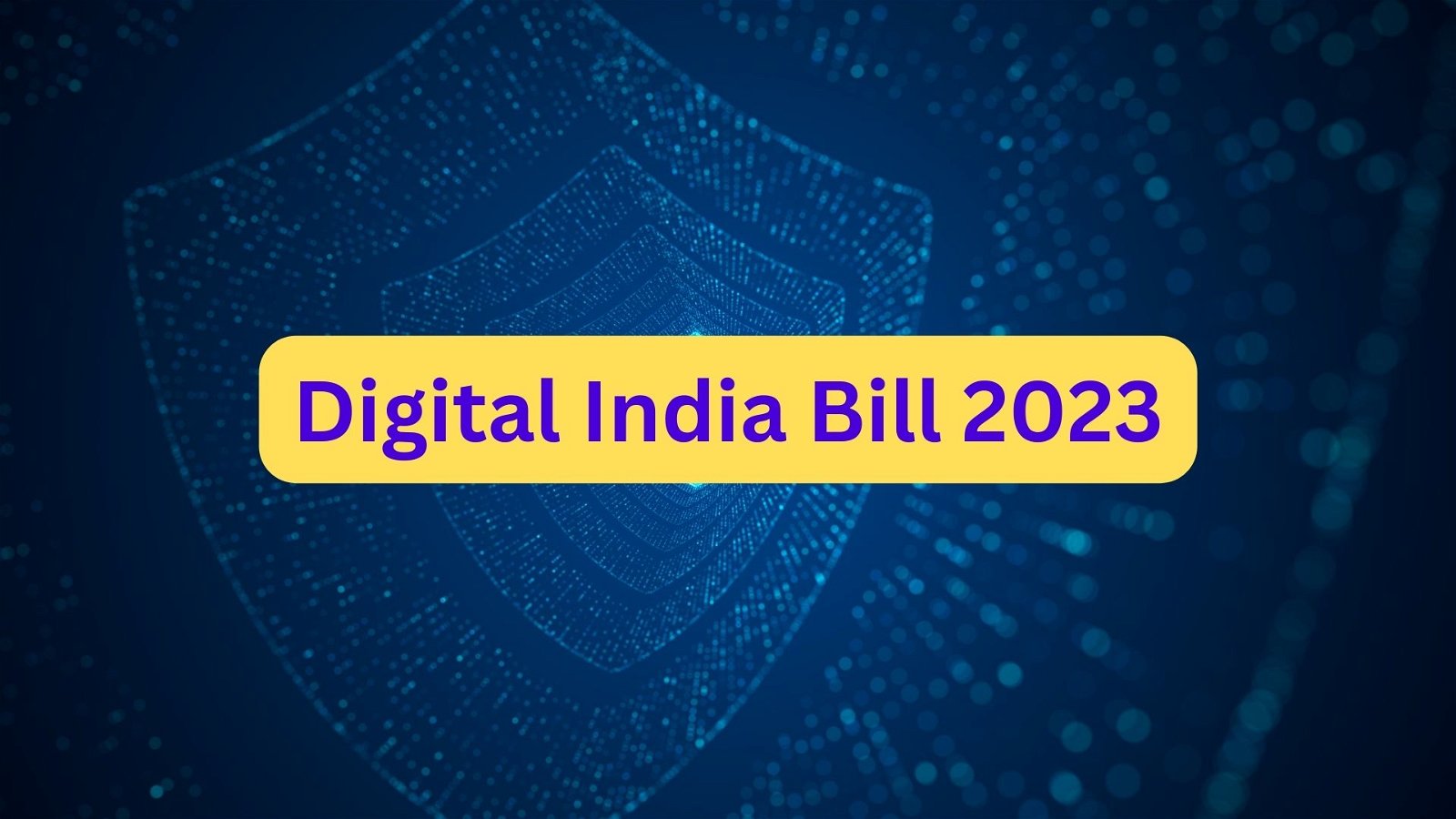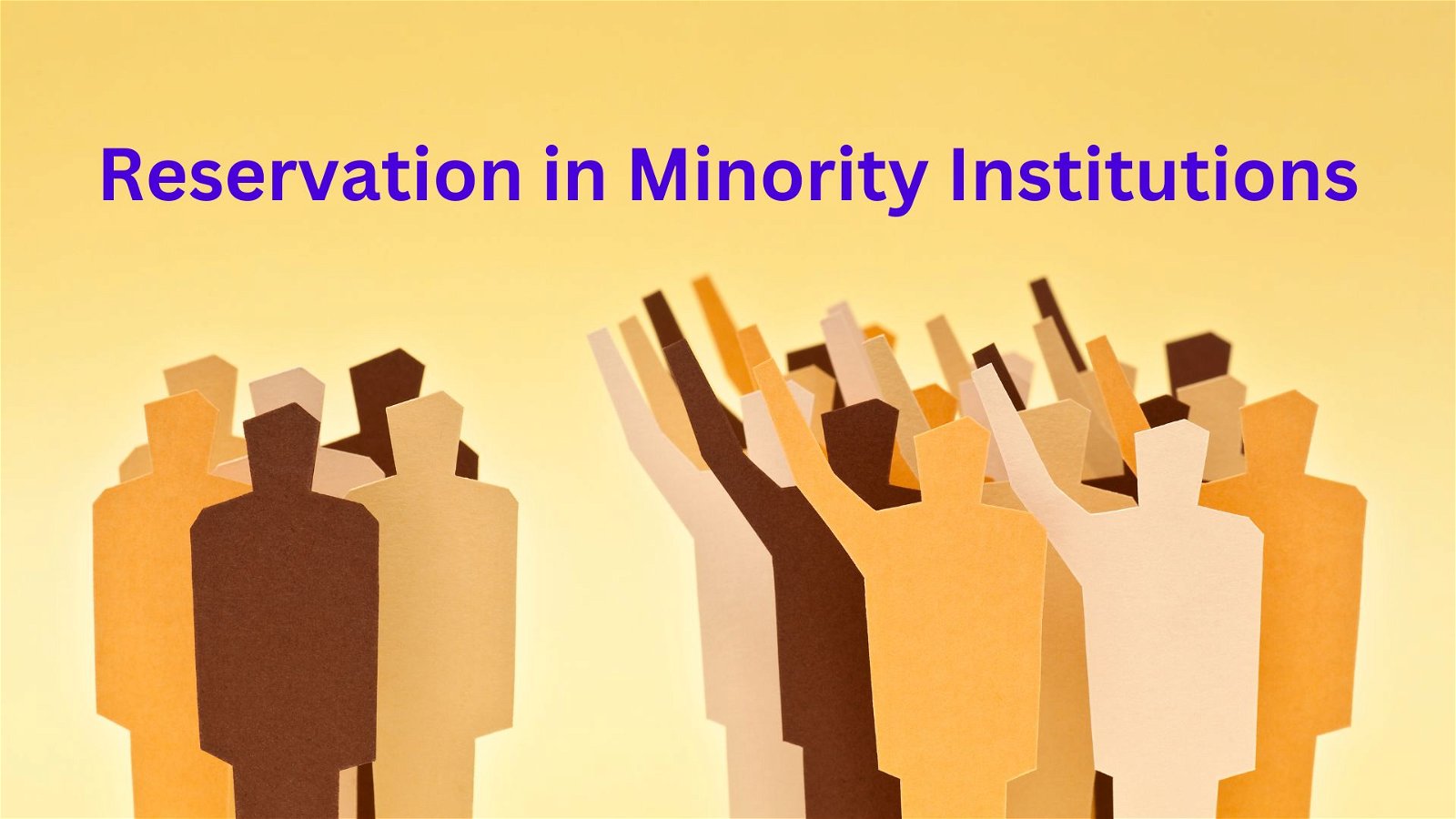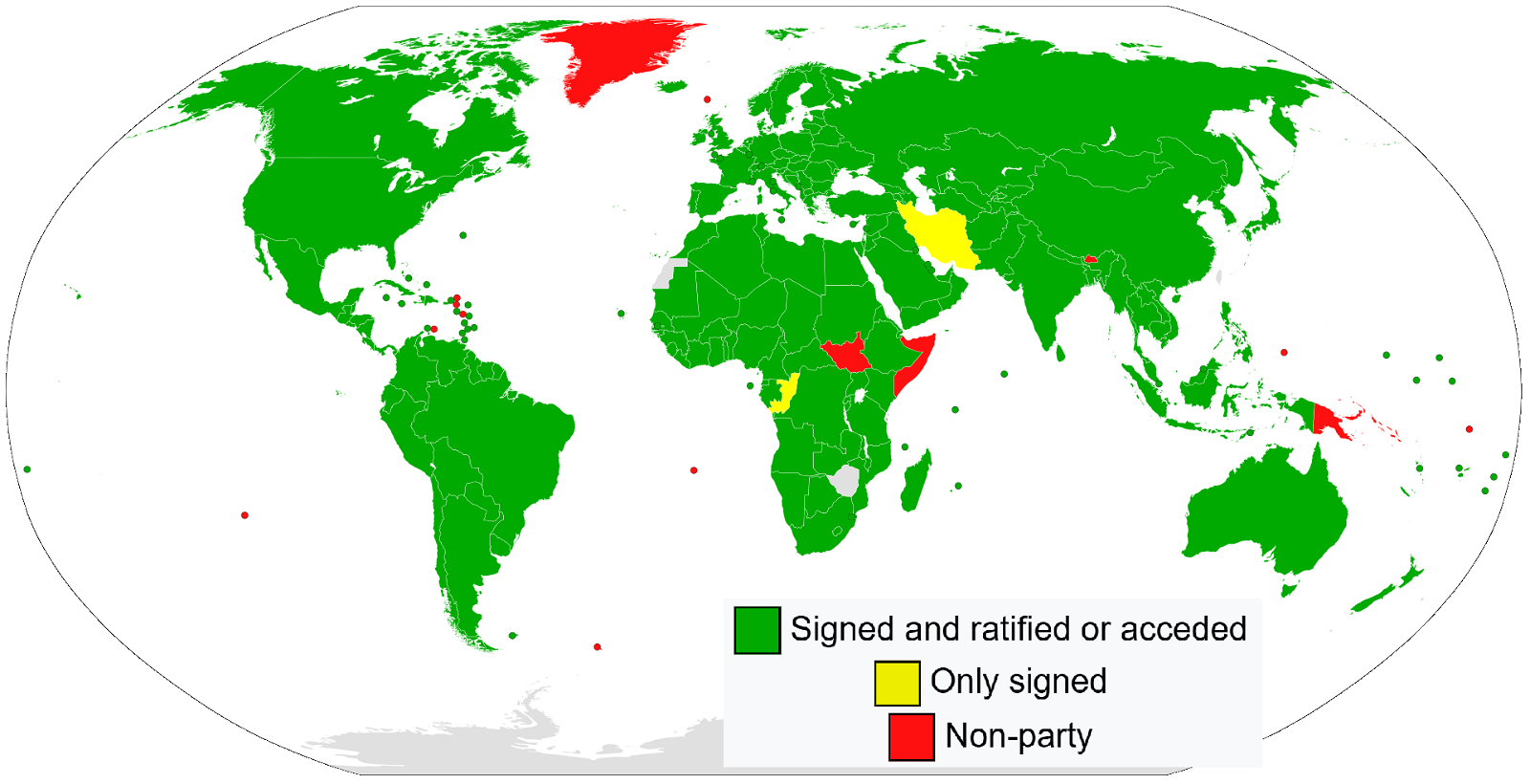
Current Affairs October 26, 2023: Constitutional Morality, PRAGATI Platform, Nutrient Based Subsidy (NBS), Right to Vote, Brazzaville Summit
Subscribers of "Current Affairs" course can Download Daily Current Affairs in PDF/DOC
Subscribe to Never Miss an Important Update! Assured Discounts on New Products!
Must Join PMF IAS Telegram Channel & PMF IAS History Telegram Channel
{GS2 – Governance – E-Gov} PRAGATI
- Context (PIB): The PRAGATI (Pro-Active Governance and Timely Implementation) Platform was launched in 2015 to introduce e-transparency and e-accountability in welfare schemes.
- The platform addresses public grievances and monitors essential government programs.
- It operates on three technologies
- Digital Data Management
- Video-Conferencing
- Geospatial Technology
Working Structure of PRAGATI
- It is a 3-tier system involving the Prime Minister’s Office (PMO), Union Government Secretaries, and Chief Secretaries of the States (promotes cooperative federalism).
- The PM holds a monthly program generally on the Fourth Wednesday (PRAGATI Day).
- Union Government and Chief Secretaries provide comments and updates on the flagged issues and grievances within three days.
Key benefits of the PRAGATI platform
- E-Transparency: Ensures transparency in governance by making information accessible in real-time.
- E-Accountability: Holds officials accountable for their actions and decisions.
- Real-Time Exchange: Facilitates real-time interaction and exchange among key stakeholders.
- Public Grievance Redressal: Addresses the grievances of the common man effectively.
- Program Monitoring: Enables monitoring and reviewing of government programmes and projects.
- Cooperative Federalism: Bringing central and state officials together.
- Technology Integration: Integrates digital data management, video-conferencing, and geospatial technology for effective governance.
UPSC Mains Practice QuestionQ. How has the Pragati platform transformed the governance paradigm in India, shifting it from a bureaucratic, top-down approach to one characterised by responsible and transparent governance?Answer: The Pragati platform has ushered in a transformative shift in the governance paradigm, effectively transitioning from a bureaucratic, top-down approach to a model marked by responsible and transparent governance. India’s governance framework – Historical Context
How the PRAGATI platform brought a paradigm shift in a traditional governance model
Collaborative Structure
Timely Decision making
Red Tape Challenges
Top-Down Approach
Pro-active Governance
Conclusion
|
{GS2 – MoC&F – Scheme} Nutrient Based Subsidy (NBS)
- Context (PIB | TH | BS | DTE): GoI has approved Nutrient Based Subsidy (NBS) rates for Rabi Season 2023-24 on Phosphatic and Potassic (P&K) fertilisers.
- GoI has lowered subsidy under the nutrient-based regime for nitrogen, phosphorus, potassium, and sulphur for the Oct-Mar period compared to the Apr-Sept period.

- NBS scheme was launched on 2010 by the Department of Fertilisers, Ministry of Chemical and Fertilisers.
- Under the NBS scheme, farmers ae provided subsidised fertilizers based on their nutrient content, namely, Nitrogen (N), Phosphate (P), Potash (K), and Sulphur (S).
- Moreover, fertilizers fortified with secondary and micronutrients receive additional subsidy.
- Objectives of NBS scheme:
- To ensure nation’s food security
- To improve agricultural productivity
- To ensure the balanced application of fertilizers
- Ambit of NBS: It covers all phosphatic and potassic (P&K) fertilisers except urea.
Issues with NBS Scheme
Increase in Imbalanced Use of Fertilisers
- Urea is not included in the NBS; it remains under price control, and its MRP is officially fixed.
- While there is no price control for fertilisers under the NBS scheme, their prices have increased.
- All these have led the farmers to use more urea, worsening fertiliser imbalance.
Environmental and Economic Cost
- Fertilizer subsidy is the second-biggest subsidy after food subsidy.
- NBS-like schemes promote chemical fertilisers, damaging soil health and costing the economy.
Recommendations of CACP for the NBS Scheme
- Bring Urea under the NBS scheme: To address the imbalanced use of fertilisers.
- Capping the number of subsidised fertiliser bags per farmer: To reduce the GoI’s subsidy burden.
Commission for Agricultural Costs and Prices (CACP)
|
||||||||
Fertilisers of India
|
{GS2 – MoCAF&PD – Initiative } New Made-in-India EV Charging Standard for LEVs
- Context (IE | TH | MC): Bureau of Indian Standards (BIS) has approved an indigenously developed charging standard for light electric vehicles (LEVs) such as scooters, bikes, and rickshaws.
|
What is Special About the New EV Charging Standard for LEVs?
- The indigenously developed charging standard is the first in the world that combines alternating current (AC) and direct current (DC) for LEVs.
- Significance of combined charging standard: Interoperability, which means it can be used by different EV models and charging infrastructure providers.
|
Why is a National Standard Needed for India?
- In India, EV makers are not mandated to follow a specific standard for charging connectors.
- LEV manufacturers like Ola Electric, Ather Energy, and Ultraviolette Automotive use diverse charging standards for their EVs.
- For e.g, Ola’s proprietary Hyperchargers are designed for charging Ola Electric scooters only.
- Problems from too many EV charging standards:
- This makes it hard for public EV charging stations to support all types.
- It creates anxiety that the EV will run out of charge and there will be nowhere to recharge it.
- All these results in lower adoption of LEV vehicles.
{GS2 – Polity – IC – Constitutional Rights} Right to Vote
- Currently, the right to vote is a constitutional right, not a fundamental right.
- Manipur HC observed that:
- Casting of votes is a part of the voter’s right to freedom of speech and expression under Article 19(1)(a) of IC.
- Voter’s right to know the antecedents, including the criminal past of the candidate contesting election for MP or MLA, is much more fundamental and basic for the survival of democracy.
Right to Vote under IC
- The right to vote is constitutional under Article 326 of IC.
- By the Sixty-first constitutional amendment act of 1988, the voting age of elections to the LS and legislative assemblies of States has been lowered from 21 to 18 years.
- To exercise this right, the country’s citizens must attain the age of 18.
The debate around Right to Vote
- The legal character of the right to vote has been debatable since the time of the inception of IC.
- In Anoop Baranwal v. Union of India (March 2023):
- The majority judgement held that the right to vote is constitutional.
- In his separate opinion, Justice Ajay Rastogi said that the right to vote is a fundamental right.
Article 19 of IC: Protection of certain rights regarding freedom of speech, etc.
|
{GS2 – Polity – IC – Parliament} Presiding Officer of LS
- Context (IE): The US House has been without a speaker for three weeks.
- The Republican Party has a majority in the House, but it is divided into many factions and cannot reach a consensus.
- The Speaker of the United States House of Representatives is the presiding officer of the United States House of Representatives.
- To be elected speaker, a candidate must receive a majority of votes from the members present and voting.
- Representatives are free to vote for someone other than the candidate nominated by their party but generally do not.
Speaker of Lok Sabha
- The Speaker of the LS is the presiding officer and the highest authority of the LS.
- The LS must choose one of its members to be the Speaker as soon as possible.
- To be elected speaker, a candidate must receive a majority of votes from the members present and voting.
- When the post of Speaker is vacant:
- The House must choose a new member to fill the vacancy.
- The Deputy Speaker presides over the Lok Sabha.
- If the post of both the Speaker and Deputy Speaker is vacant, the President can appoint a member of the LS to perform the duties of the Speaker’s office. The person so appointed is known as the Speaker pro tem.
- When the speaker is absent:
- The Deputy Speaker presides over the LS.
- If both the Speaker and Deputy Speaker are absent, anyone from the Panel of Chairpersons can preside over the house.
Panel of Chairpersons
|
- After the dissolution of LS:
- The Speaker remains in office until just before the first meeting of the new House.
- When the LS meets after the election, the President appoints a member of the LS as a pro-tem speaker for the conduct of the house.
- The President himself administers oath to the pro tem speaker.
- Pro tem speaker administers the oath to new members and enables the house to elect the new speaker.
Vacating the Speaker’s Office
- The speaker has to vacate his office:
- If he ceases to be a member of the LS
- If he resigns by providing written notice to the Deputy Speaker
- If he is removed by a resolution passed by a majority of all then members of the LS.
{GS2 – Polity – IC – Political Parties} Independent Dalit Political Parties
- Context (TH): Dalit politics in India evolved with the rise of independent Dalit political parties, like the Republican Party of India (RPI), the Bahujan Samaj Party (BSP), and other regional political parties.
Factors Responsible for the Rise of Dalit Politics
- The socio-political profile of Dalit communities has changed over time. It was because of the following factors:
- Influence of democracy
- The percolation of education at the grassroots
- State-led affirmative actions
- Rising developmental desires
Role of Independent Dalit Political Parties
- Dalit empowerment
- Cultivation of assertive consciousness among Dalits
- Rise of several leaders and cadres in the Dalit communities
Reasons for the decline
- Most independent Dalit political parties are gradually weakened with each passing day. The reasons for the decline include:
- Individual ambitions and a growing impatience of Dalit leaders to gain political power.
- Failure to provide sufficient political space to a politically aspirant section of Dalit communities.
- Unable to respond to the changing aspirations and identity quest by a section of Dalit communities.
- Growth of a dynastic political culture.
- Failure to develop an effective political programme.
- Working in a conventional mode of politics
- Fragmentation within party
- Social welfare schemes launched by the major political parties attract Dalit people and leaders to their party.
History of Dalit Politics
Dalit Panthers
Bahujan Samaj Party (BSP)
|
{GS2 – Polity – IC} Constitutional Morality
- Context (IE): The SC’s constitution bench unanimously rejected granting legal recognition to same-sex marriage.
- The decision seems to have followed what most people believe (majoritarian morality) rather than upholding constitutional morality.
- Constitutional morality refers to respecting and following the principles and values enshrined in a constitution.
- It involves upholding the spirit of the Constitution, its ideals, and the rule of law.
- In the context of IC, the constitutional values are Democracy, Socialism, Equality, Integrity, etc.
- The principle of constitutional morality means to obey the rules of the constitution and not to act in a manner that would break the law.
Constitutional Morality in the Indian Context
- In the IC, the term ‘Constitutional Morality’ is not used in any of the Articles.
|
- The SC used the concept of constitutional morality as an aid in the interpretation of the:
- FRs provided under the IC.
- Constitutional validity of the laws.
- In 2018, the SC passed historical judgments based on constitutional morality. These are:
- Right to Privacy
- Decriminalization of consensual relationships under section 377 and section 497 of IPC
- Triple Talaq
- Sabarimala temple case
Dr Ambedkar on Constitutional Morality
- Dr Ambedkar explained constitutional morality in one of the constituent assembly debates.
- According to Dr Ambedkar, constitutional morality involves:
- A deep respect for the structure of the Constitution
- Adherence to authority
- The practice of free speech within legal boundaries.
- The confidence that the Constitution is upheld by all, irrespective of political differences.
|
{GS3 – Envi – Conservation} Brazzaville Summit of the Three Basins, Biodiversity Ecosystems, and Tropical Forests
- Context (DTE): As Brazzaville Summit delegates convene, a global report reveals significant threats to tropical forests in these areas from fossil fuel, mining, and extractive industry expansion.
- The Brazzaville Summit of the Three Basins, Biodiversity Ecosystems, and Tropical Forests is a high-level meeting of leaders from the Amazon, Congo Basin, and Borneo-Mekong regions.
- Objective: to strategise for the sustainable management and conservation of their tropical forests.
- These three basins host 80% of the world’s tropical forests and 2/3rd of land biodiversity.
- They regulate global climate, support livelihoods, and safeguard biodiversity.
- The summit is expected to focus on the following key areas:
- Strengthening South-South cooperation: Promote cooperation among the three regions on sustainable forest management, biodiversity conservation, and climate change mitigation.
- Establishing effective global governance for environmental and climate challenges
- Mobilizing financial resources for sustainable forest management and biodiversity conservation
|
The Three Basins
Amazon Basin

- The Amazon Basin is the largest ecosystem and tropical forest on the Earth.
- It covers 9 countries: Brazil (60% of the Amazon rainforest), Peru, Ecuador, Colombia, Venezuela, Bolivia, French Guiana, Suriname, and the Republic of Guyana.
- The Amazon River is the largest drainage system in the world in terms of the volume of its flow and the area of its basin.
- Located in South America, it is the second-longest river in the world.
- It originates in the Peruvian Andes and drains into the Atlantic Ocean.
- It produces about 20% of the world’s freshwater flow into the oceans.
Congo Basin
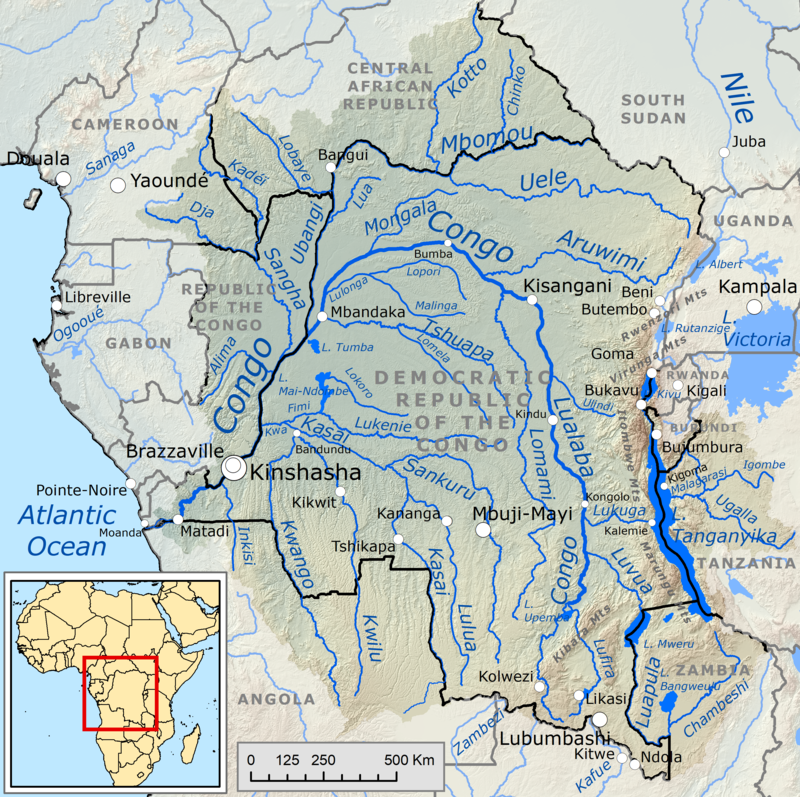
- Located in Central Africa, the Congo Basin is home to the world’s second-largest rainforest.
- It covers six countries: Cameroon, Central African Republic, Democratic Republic of the Congo, Republic of the Congo, Equatorial Guinea, and Gabon.
- The Congo Basin is the world’s second-largest carbon sink.
- The Congo River (formerly the Zaire River) is the second-longest river in Africa.
- It is the third-largest river in the world by discharge volume, following the Amazon and Ganges.
- It is also the deepest river in the world.
- It rises in the highlands of Zambia between Lakes Tanganyika and Nyasa (Malawi) as the Chambeshi River and drains into the Atlantic Ocean.
Borneo-Mekong-Southeast Asia Basin
- It is composed of two sub-regions: the island of Borneo and the Mekong River Basin.
- This basin of Southeast Asia is the third global ecosystem of biodiversity and tropical forests.
Mekong River
- The Mekong River is a trans-boundary river in East and Southeast Asia.
- Also called Lancang River (in China), it is the third-longest river in Asia.
- It crosses six countries: China, Burma, Thailand, Laos, Cambodia, and Vietnam.
- It rises in the Tibetan Plateau and drains into the South China Sea.

Borneo
- Borneo (also called Kalimantan) is the third largest island in the world.
- It represents only 1% of the planet’s land but holds about 6% of the world’s biodiversity.
- It is politically divided among three countries: Malaysia, Brunei, and Indonesia (73% of the island).

Source: Geology.com
Findings of the Global Report on the Three Basins
- These basins are experiencing significant forest loss, leading to a systemic ecosystem breakdown affecting global climate, biodiversity, and livelihoods of indigenous peoples and communities.
- 20% of intact tropical forests in these basins are within active or potential oil and gas concessions
- Amazon basin: 13% of undisturbed forests are threatened by oil & gas, and over 33% by mining.
- Congo basin: Over 39% of undisturbed forests are threatened by oil & gas, and 27% by mining.
- Borneo-Mekong basin: Oil and gas production threatens 20% of undisturbed forests.
Specific examples of the degradation of tropical forests in these regions
|
{GS3 – IE – Employment} Female Labour Force Participation
- Context (TH): The Periodic Labour Force Surveys (PLFS) highlighted gender disparities in the workforce, revealing that, on average, women work fewer hours than men.
- Men consistently earn more than women across all forms of work, with the broadest gap observed in the self-employed sector.
- In 2023, male self-employed workers earned 2.8 times more than their female counterparts.
- The global Labor Force Participation Rate (LFPR) for women stood at 47.3% in 2022, indicating relatively low female participation worldwide.
- India experienced a decline in female LFPR from 28% to 24% between 1990 and 2022.
Causes of Low Women LFPR
- Patriarchal Mindset: The patriarchal norms of Indian society and social constraints on women’s freedom result in lower LFPR.
- Nuclearisation of Families: Childcare and household work restrict women’s participation in work.
- Caste Factor: In some upper castes, a stigma is attached to women working outside the home.
- Increased Enrollment in Secondary Schooling: This has led to a decline in women’s participation in the workforce.
- Rising Household Incomes: This has resulted in women being pulled out of agricultural labour.
- Working Conditions: Factors such as law and order, efficient public transportation, violence against women, societal norms, creche facilities, etc., are far from conducive for women to seek work.
- Domestic Duties: Many women in India are exclusively in their homes, caring for their families.
Steps to increase the Women Labour Force Participation Rate
- Change in Attitudes: Challenge patriarchal norms and promote women’s ability to balance domestic and professional responsibilities.
- Government Policies: Implement policies for equal opportunity, enhanced maternity leave, mandatory creche facilities, and night shifts for women with adequate safety measures.
- Education and Skill Training: Improve women’s employability through access to higher education and skill training.
- Flexible Work Practices: Adopt flexible work schedules, gender-equal policies, affordable childcare, location flexibility, and options for reduced work hours.
- Collaboration of Society-Government-Business: Combine behaviour change communications, resources and actions for sustainable solutions.
For more info: {GS3 – IE – Employment} Periodic Labour Force Survey (PLFS) 18th oct
{GS3 – S&T – Defence} Agnipath Scheme and Agniveers
- Context (IE): The Agnipath scheme was introduced in 2022 to take in recruits for the Army, Navy, and Indian Air Force (IAF) on four-year contracts, including six months of training.
- At the end of four years, up to 25% of recruits can apply to join the services regularly, subject to merit and organisational requirements.
- The scheme had also opened doors for recruitment of women as Agniveers to the IAF and Navy.
- The Army started recruiting women soldiers into its Corps of Military Police in 2019.
Why was the Agnipath scheme brought?
- To ensure a “youthful profile” for the armed forces, reducing the average age of serving soldiers.
- Transform the armed forces into a tech-savvy and modern fighting force.
- To bring down the overall defence pension bill.
- Availability of disciplined and skilled youth in civil society after four years of service.
Entitlements for Agniveer
- The remuneration of an Agniveer is Rs 30,000-Rs 40,000 per month, and they are entitled to risk and hardship allowances.
- The scheme also has a Seva Nidhi contributory package, under which the Agniveers contribute 30% of their monthly emoluments, and the government contributes the same amount.
- After four years, they will receive around Rs 11.71 lakh (with interest) from the package, which will be exempt from income tax.
- In case of death on duty, they will receive more than Rs 1 crore, including the Seva Nidhi package and total pay for the period they could not serve.
- In a disability, they can receive up to Rs 44 lakh depending on the extent of disability suffered, attributed to or aggravated by military service.

How do these benefits compare with those due to a regular soldier?
Employment Status and Pension
- The biggest difference between a soldier employed on regular service and an Agniveer serving for four years is that the former will draw a pension post-retirement, while an Agniveer will not.
- The 25% of Agniveers who would eventually be absorbed into the forces after four years will be eligible for pension after retirement.
Casualty Compensation
- In case of a battle casualty, the family of a regular soldier gets a liberalised family pension equal to the last pay drawn for life. There is no income tax on this amount.
- The family of an Agniveer is eligible only for a non-contributory insurance sum of Rs 48 lakh.
Gratuity
- Gratuity means a one-time reward given to the employer for the past service rendered.
- A regular soldier gets a gratuity for 15 days per year for every year of service and has an insurance cover of Rs 50 lakh.
- Soldiers on regular service also get a children’s education allowance up to graduation.
- None of these are available to Agniveers.




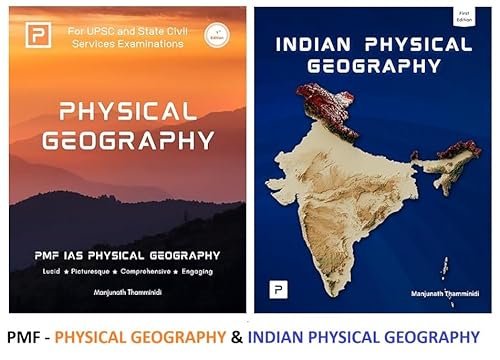
![PMF IAS Environment for UPSC 2022-23 [paperback] PMF IAS [Nov 30, 2021]…](https://pmfias.b-cdn.net/wp-content/uploads/2024/04/pmfiasenvironmentforupsc2022-23paperbackpmfiasnov302021.jpg)
